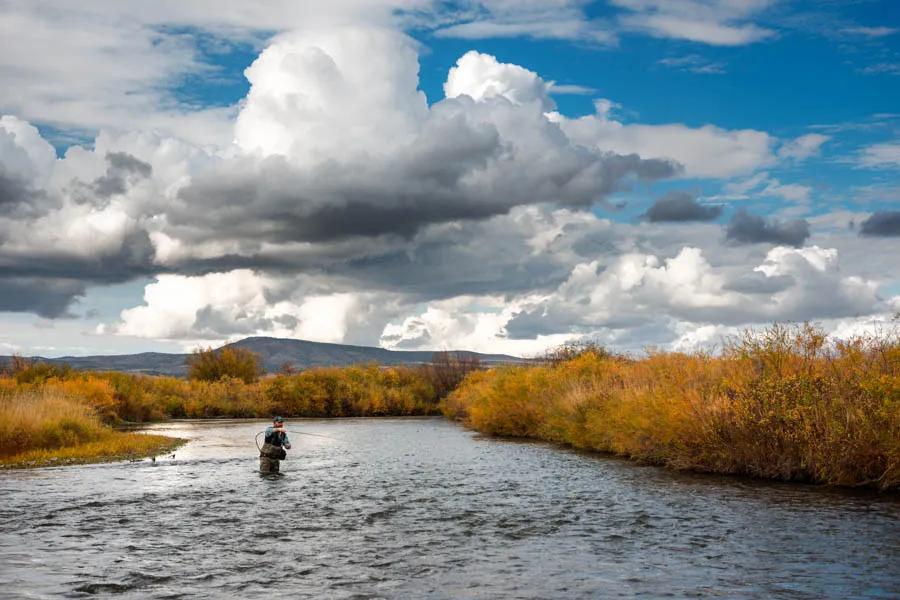
Montana boasts perhaps the highest concentration of quality fly fishing for trout in the world. With a network of well-maintained roads and public access areas, fishing the best rivers, creeks, and lakes in Montana is logistically very easy. Compared to the remote and secluded rivers of Chile and Argentina, a Montana fly fishing trip is well within reach regardless of where home is. Additionally, Montana's best fly fishing waters have an abundance of experienced, professional fishing guides that intimately know the habits of these rivers, creeks, and lakes and the fish that swim in them. From consistent tailwater rivers like the Missouri River near Helena and Great Falls to wild and untamed freestones like the Yellowstone River near Bozeman and Livingston, and with all sorts smaller creeks and rivers in between, Montana has it all. To fish the best waters at the best times in Montana takes some planning, a little time, and a small dose of luck.
To help you plan your next great fishing trip, in no particular order, here are the 10 Best Fly Fishing Rivers in Montana.
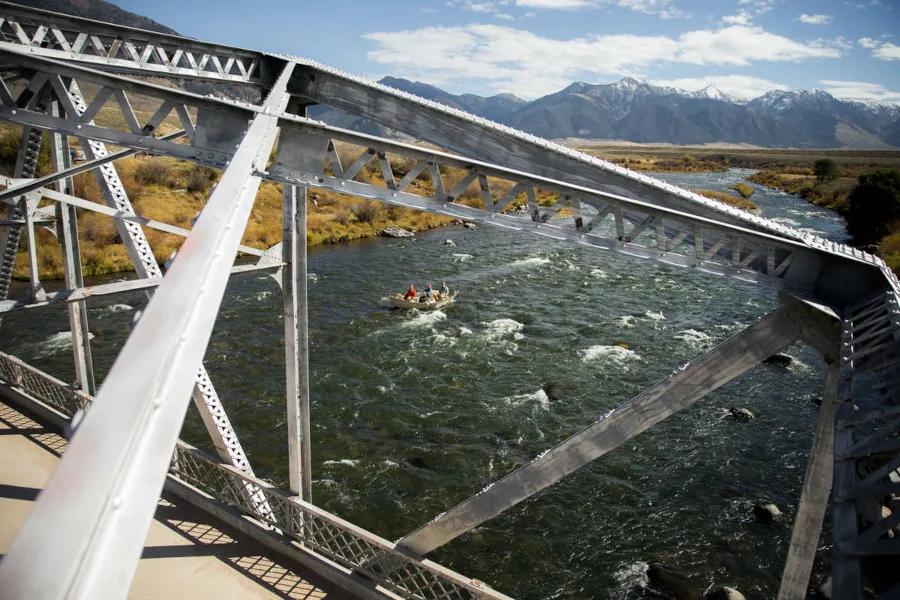
The Madison River
Originating in the wild country of Yellowstone National Park and home to native Westslope cutthroat, rainbow, and brown trout and mountain whitefish, the Madison is Montana's most well known river. Flowing through one of the most scenic valleys in Montana and flanked by the towering Madison, Gravelly and Tobacco Root ranges, the Madison River boasts some great fishing lodges and some of the most experienced guides in Montana. The impressive scenery, high trout counts, potential for trophy fish and proximity to Yellowstone make this a must fish river for every serious fly fisherman. The Madison River offers an amazing diversity of water and can vary significantly in its character as it travels on its course from Yellowstone National Park to the Missouri River.
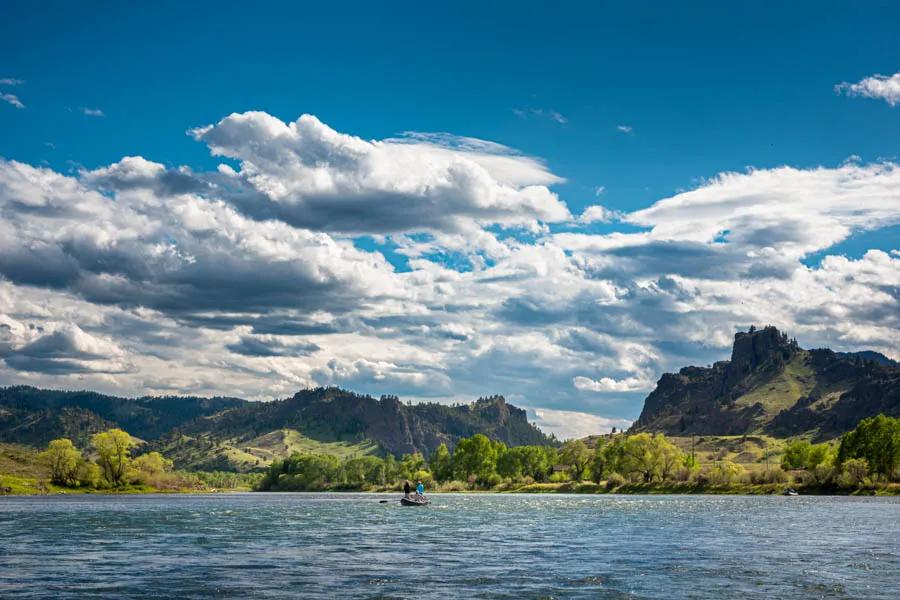
The Missouri River
For decades the Missouri River used to be a relative secret amongst the best rivers in the state, or the West for that matter. But the secret is out on the abundant fly fishing opportunities on this unique central Montana tailwater. Boasting fish counts well over 6,000 trout per mile and with dozen of floats available, the Missouri River's reputation as a world-class fly fishing river for large and numerous trout has moved it to the top of most angler's bucket lists. Compared to some other well-known Montana tailwater fisheries like the Bighorn and Beaverhead Rivers, the Missouri is large. As one of the more larger rivers in Montana anglers can enjoy float fishing on nearly two dozen floats but also can get out of the boat and hunt for fish on the any of the rivers numerous side channels and habitats created by plentiful islands. The guides on the Missouri River are hard-working and dedicated to finding plenty of large trout on a regular basis.
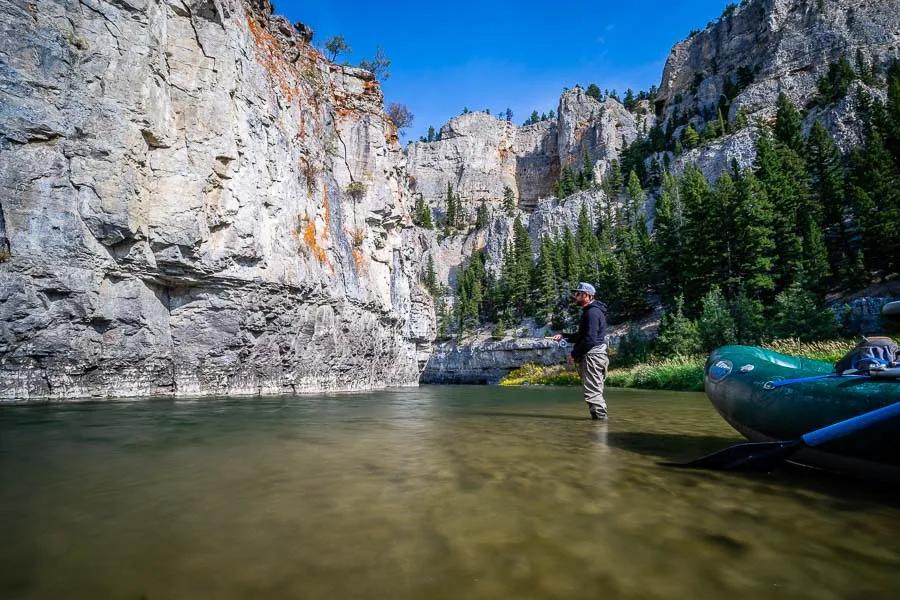
The Smith River
If the perfect fly fishing river for adventure were to be created, the Smith River would be the template. Small, secluded, and cutting through a scenic limestone canyon is Montana's Smith River. Legendary, iconic, bucket-list, best-ever, magnificent, etc, etc...hyperbole isn't wasted on a fishing trip on Montana's Smith River. For nearly 60-miles anglers can enjoy a river that is carefully managed by the state of Montana to ensure a high quality of experience. The river corridor is comprised of towering limestone cliffs and heavily timbered forests broken only by a few small clusters of cabins on private land. Because of the strict permit system, fishing pressure on the Smith is much lighter than on other major Montana rivers. Both Rainbows and Browns are present in good numbers, and fish over 20" are taken on virtually every trip. The Smith River is a special trip for the Do-It-Yourself angler and DIY floaters and anglers can apply for a launch through the Montana Fish Wildlife and Parks lottery system. As a licensed Smith River outfitter Montana Angler also has a select number of guided Smith River trips each year.
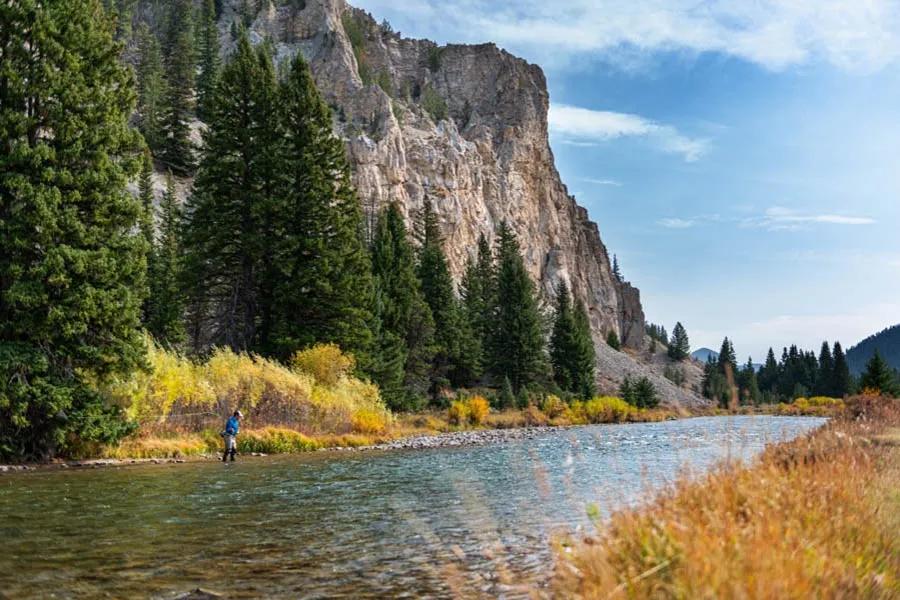
The Gallatin River
Born in some of the most rugged country of Yellowstone National Park, this small freestone boasts fish counts well over 2,000 fish per mile. Flowing through the mountain resort town of Big Sky and near the bustling outdoor activity-centric town of Bozeman, anglers looking to fish the Gallatin River will have a variety of accesses to choose from and a river that fishes well year-round. In its upper reaches, it flows through a spectacular alpine environment within the Gallatin Canyon where the fishing scenes from the movie A River Runs Through It were filmed. After exiting the canyon it enters the Gallatin Valley and becomes a meandering medium-sized freestone lined with cottonwoods. The Gallatin River is very close to Bozeman and many Bozeman fishing guides know this river inside and out. The river is not known for trophy trout like some of the other larger rivers in the area, but the beauty of this river and its small intimate nature make this a favorite of many anglers. Because of the very high trout density, this river often produces fast action and high catch rates.

The Yellowstone River
As the longest undammed river in the Lower 48, the Yellowstone River flows from the mountains of Yellowstone National Park to the high plains of eastern Montana. Home to native Yellowstone cutthroat trout, the Yellowstone is a large, wild, and ever-changing freestone river. Serviced by the towns of Gardiner, Livingston, Big Timber, and Billings, anglers wanting to discover fishing on the Yellowstone River have plenty of local resources to choose from. The Yellowstone is also one of the most variable rivers in Montana with a huge range of water flows and fishing conditions. Casting a fly on the Yellowstone at 10,000 cfs vs. 1,500 cfs is quite a different experience. Because of the massive amount of water that the river has to offer, the wide range of water levels, the diversity in the river sections and the seasonal changes in fishing patterns, the Yellowstone River can take years before a fly fisher truly understands the full majesty of this amazing river. The diversity, changing character and quality of fishing that the Yellowstone River offers makes it a favorite of many of many Montana fly fishing guides.

The Big Hole River
Small and wild--similar to a mini-Yellowstone River--the Big Hole flows throughout southwest Montana and is nicknamed Montana's Last Best River. The Big Hole River is as diverse as it is divine. The river and its tributary streams are home to five species of Montana gamefish: brown trout, rainbow trout, Westslope cutthroat trout, brook trout, and the Lower 48's last remaining strong hold of native fluvial arctic grayling. This fishery has four distinct sections over its 150 mile course encompassing high country meadows, tight canyons, and wide open cottonwood river bottoms. With pocket water, riffles, pools, shallow edges, deep runs, undercut banks, and long tail outs the Big Hole's variety of water is a big reason many anglers return year and after to this Montana freestone river. With a wide spectrum of aquatic insect species; some of the most prolific hatches including salmonflies, Mother's Day caddis, Pale Morning Duns, and tricos anglers heading to the Big Hole river may very well find some of the state's best dry fly fishing for wild trout.
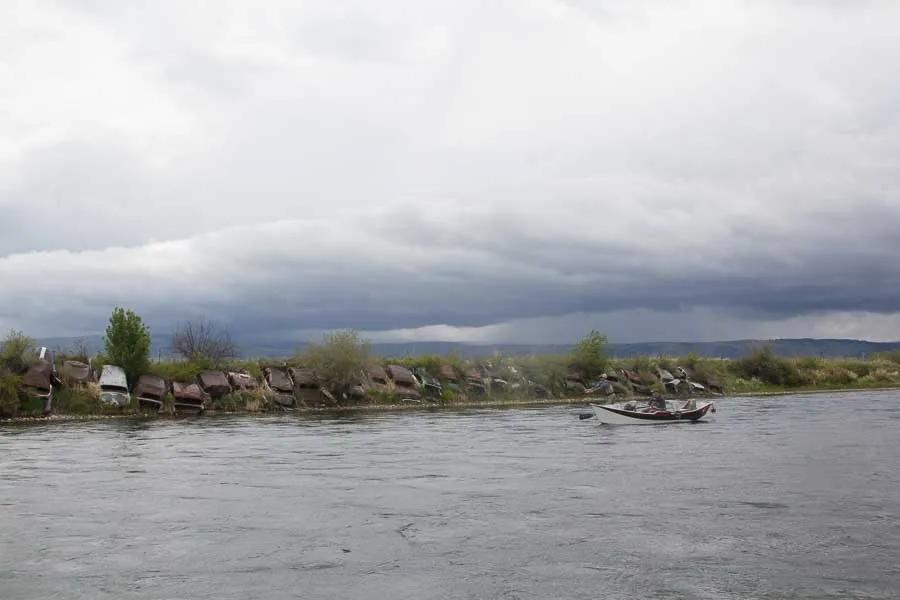
The Bighorn River
Similar to the Missouri River, the Bighorn River is a tailwater river that originates from the cold water at the bottom of a reservoir. Originating from Yellowtail Dam near Billings, Montana and near Sheridan, Wyoming the Bighorn River has a reputation for producing several thousand fish per mile and prolific hatches. Compared to many other of the best rivers in Montana for fly fishing, the Bighorn River is short. With only about 26 miles of cold water trout habitat, nearly all the trout fishing in the Bighorn River occurs on the upper river. The Bighorn flows through some of the more rural areas of Montana, but because it is home to so many trout and features abundant hatches and has high catch rates, the river is popular and it is not a place for solitude. Fishing the Bighorn River with a knowledgeable and experienced guide will enhance your fishing experience and increase your catch rates. Home to rainbow and brown trout and mountain whitefish, this southeastern Montana river is a unique fishery and has a more lean-to feel when compared to the more majestic and mountain rivers of central and southwestern Montana.
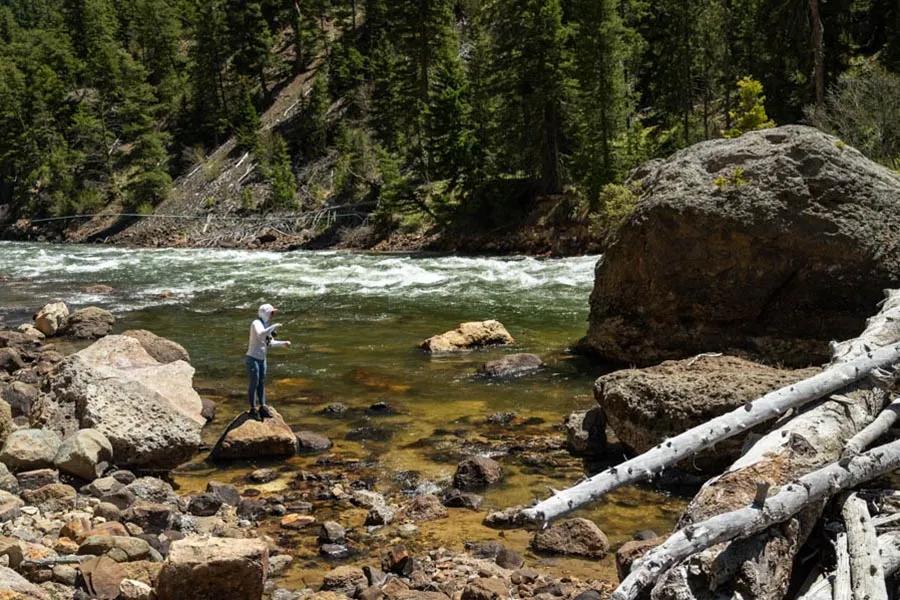
Yellowstone National Park Waters
Known for geysers and wildlife, Yellowstone National Park is also the headwaters for many of the rivers on this list. Although the majority of the waters technically lie in the state of Wyoming, many anglers will enter the Park through the Montana towns of West Yellowstone, Gardiner, or Cooke City. The Gallatin, Madison, Yellowstone, and even the Bighorn (Shoshone forks) rivers all get their start in Yellowstone National Park. The Firehole, Gibbon, Slough Creek, Lamar, and many other small creeks and lakes are all well known walk-and-wade rivers and creeks. The park is also home to native Yellowstone cutthroat trout as well as rainbow, brown, and brook trout. Fly-fishing trips inside Yellowstone National Park are exclusively walk and wade only by regulation. The fisheries are bountiful and diverse and range from the massive Yellowstone River in the Black Canyon to tiny brook trout streams in remote valleys.
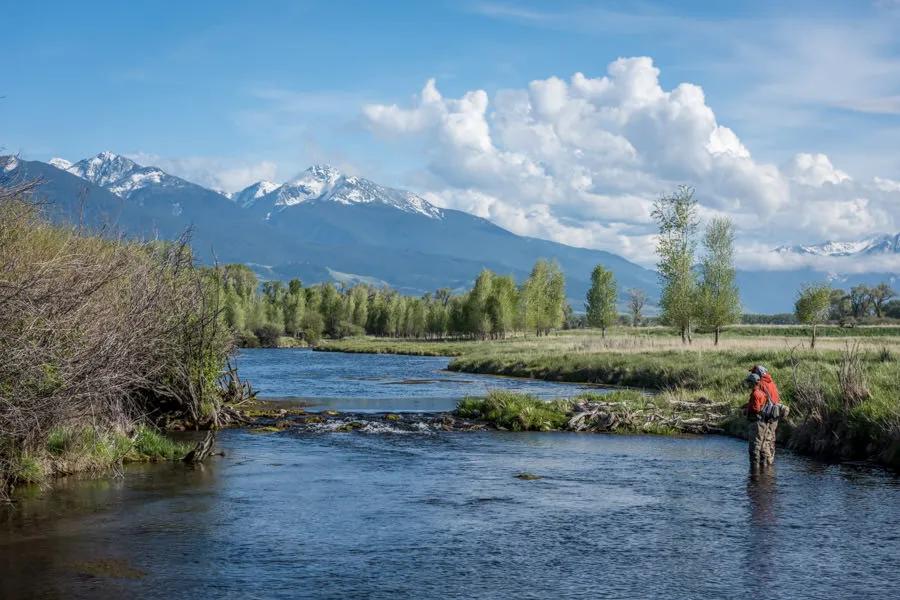
Paradise Valley Spring Creeks
Few places in the realm of fly fishing beckon as much awe as the spring creeks in Paradise Valley, Montana. If you've read any fly fishing magazine in the past few decades you most likely have seen pictures of the one of the Paradise Valley Spring Creeks. World renown for prolific mayfly hatches and clear, cold water, these small creeks are a dry fly and sight-nymphing anglers dream stream. These technical fisheries originate from underground aquifers and flow cold and clear year round. The biomass in the spring creeks are astounding and trout densities are extremely high. The combination of abundant food options and gin clear waters produce conditions that require stealth and match the hatch presentations. Many anglers consider spring creek fly fishing to be the ultimate challenge in the sport. There are two main creeks in Paradise Valley, DePuy's Spring Creek and Armstrong's Spring Creek. Few places on earth can match the picturesque beauty of these creeks with the Absaroka Mountains towering above a valley filled with deer, swans, cranes, and bubbling trout waters. Spring creek fly fishing is always very technical and the advantage of an experienced fly fishing guide can be beneficial.
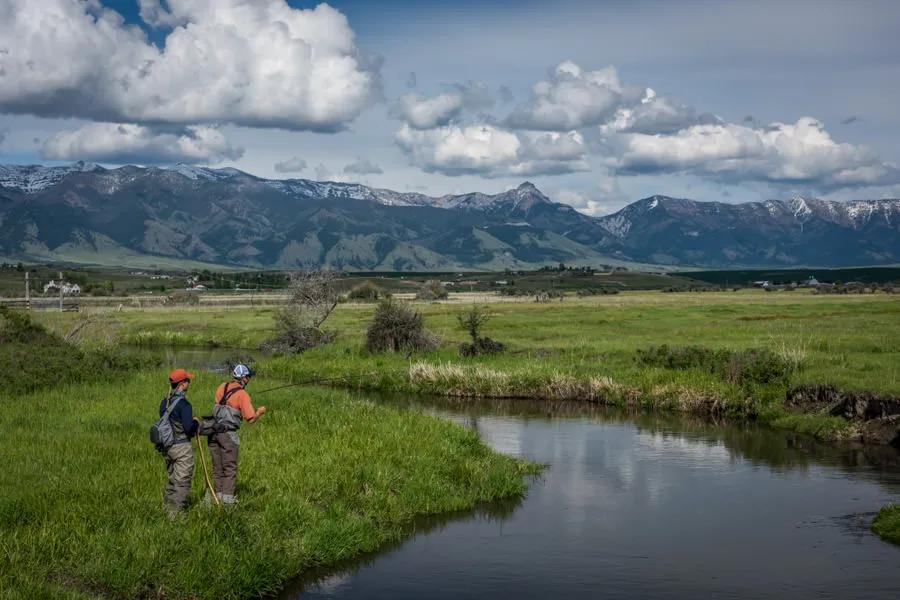
Secret Creeks and Off the Beaten Path Waters
When looking at a map of Montana, veins of blue waterways permeate. According to the United States Board on Geographic Names, there are at least 100 named mountain ranges and sub-ranges in Montana. Emerging from these mountain ranges are thousands of small creeks and rivers. Not all harbor viable populations of trout, but many do. Some of these waters flow through large private ranches and others flow through national forest or other public lands. When it comes to learning where to go and when is the best time to fish these secret creeks and off-the-beaten-path waters, a little sweat equity is often required. Montana Angler has some exclusive access to these large ranches. A trespass fee for most ranches is often charged and passed along to the ranch owners. Several of the ranches offer outstanding opportunities to hook and land trophy trout, while others have potential for great action on smaller fish in a scenic setting. A fishing trip to one of Montana's working ranches is a great way to experience some remote fishing in solitude.
When planning a fly fishing trip to Montana, or anywhere in the western United States, a lot of the fun lies in deciding where and when to go fishing. Montana is arguably home to the most abundant variety of easily accessibly fly fishing waters in North America. From well-known large rivers like the Missouri and Madison to small, intimate walk-and-wade waters like the Paradise Valley Spring Creeks or waters in Yellowstone Park, there is something for all desires and abilities of anglers in Big Sky Country.
